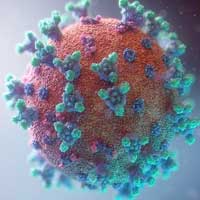| Dec 23, 2020 |
|
|
|
(Nanowerk News) With two, FDA-approved vaccines now rolling out across the USand at least one other promising candidate potentially available as soon as early 2021the beginning of the end of the COVID-19 pandemic may one day soon be in sight.
|
|
Developing safe and effective vaccines for a novel disease in less than a year was an unprecedented scientific achievement, made possible by use of a novel vaccine technology: mRNA. We asked two Columbia Engineering experts to break down the science behind it.
|
|
Prof. Sam Sia is a biomedical engineer who specializes in tools for rapid diagnosis. Current commercial COVID-19 testing is either very fast or highly accurate; Sias group is devising a new, NIH-funded COVID-19 test that is both, by combining state-of-the art molecular diagnostics with a streamlined platform that returns results in under ten minutes.
|
|
Prof. Jingyue Ju is a chemical engineer who recently identified a whole library of molecules with COVID-19 therapeutic potential. The coronavirus that causes COVID-19 uses a type of protein called polymerase to replicate its genome inside human cells; Jus molecules terminate the polymerase reaction, stopping the coronavirus growth so our immune systems can eradicate it.
|
|
The two COVID-19 vaccines currently with FDA approvaldeveloped by drug companies Pfizer and Modernause something called messenger RNA to provoke an immune response. How do these vaccines work?
|
|
Sam Sia: Messenger RNA, or mRNA, vaccines are a more recent method for creating vaccines. They work by delivering instructions to a patient’s cells for making a viral protein. These instructions include only a very limited set of protein-coding instructions compared to the whole viral genome; in this way, they simulate a viral infection without risk of a real infection. They can potentially provoke a robust immune response because by activating two different arms of the immune system, one dealing with antibodies and another dealing with immune cells. These immune cells include memory T-cells, which may lead to longer immunity. Traditional antiviral vaccines focus on provoking mostly an antibody response.
|
|
Why do you need to take two doses?
|
|
SS: The two-dose schedule is what has been tested in the clinical trials to be effective. It is based on previous vaccines where the first injection primes the immune system for an initial response, while a second boost dose could result in a fast and strong response due to immune memory. However, it is still possible that other dosing schedules also provide an effective responsebut they have not yet been rigorously tested.
|
Why must these types of vaccines be kept so cold?
|
|
SS: There are two reasons, having to do with the two main components to the vaccine. First, RNA molecules are not very stable, and refrigeration prevents them from quickly degrading. This RNA component is similar for the Pfizer and Moderna vaccines. The difference between the two vaccines is the lipid nanoparticle that contains the RNA. This lipid component is different for the two vaccines, thus the two vaccines require different temperatures for storage.
|
|
There is also currently one, single-dose vaccine in Stage 3 clinical trials that are expected to wrap up by the end of January. That vaccine takes a different approach, using an Adenovirus. How do Adenovirus vaccines work?
|
|
Jingyue Ju: Adenovirus vaccines for COVID-19 are DNA-based. This type of vaccine uses non-replicating Adenovirusstrains of common viruses engineered to be harmless to humansto serve as a vector to transport DNA codes for the coronavirus spike protein to the host cell nucleus.
|
|
Again, the key is, what these vaccines deliver is just that sliver of the viral DNA, so that the vaccine itself doesnt make you sick. Inside the nucleus, our cells produce mRNA based on the DNA codes. The mRNA is then used as a template to produce the coronavirus protein, which in turn will activate the immune system in order to protect the host from infection by the real virus.
|
From the recipients perspective, is there any difference between the two approaches?
|
|
JJ: The final viral proteins generated from mRNA and Adenovirus-based DNA vaccines are essentially the same. Once doses are optimized, theres virtually no difference from the recipients perspective. One special consideration with Adenovirus-based vaccines is to select the right strain to start with.
|
|
Developers have to ensure that these vaccines are also effective in individuals who have already developed immunity for Adenoviruses that frequently infect human populations, which is why vectors derived from a rarer Adenovirus subtype or chimpanzee Adenoviruses are sometimes used to produce DNA vaccines.
|
Logistically, do the two different types of vaccines need to be handled differently?
|
|
JJ: If theyre proven to work, DNA vaccines using Adenovirus as a vector are more stable than mRNA vaccines and are easier to produce.
|

